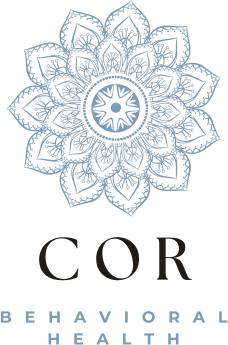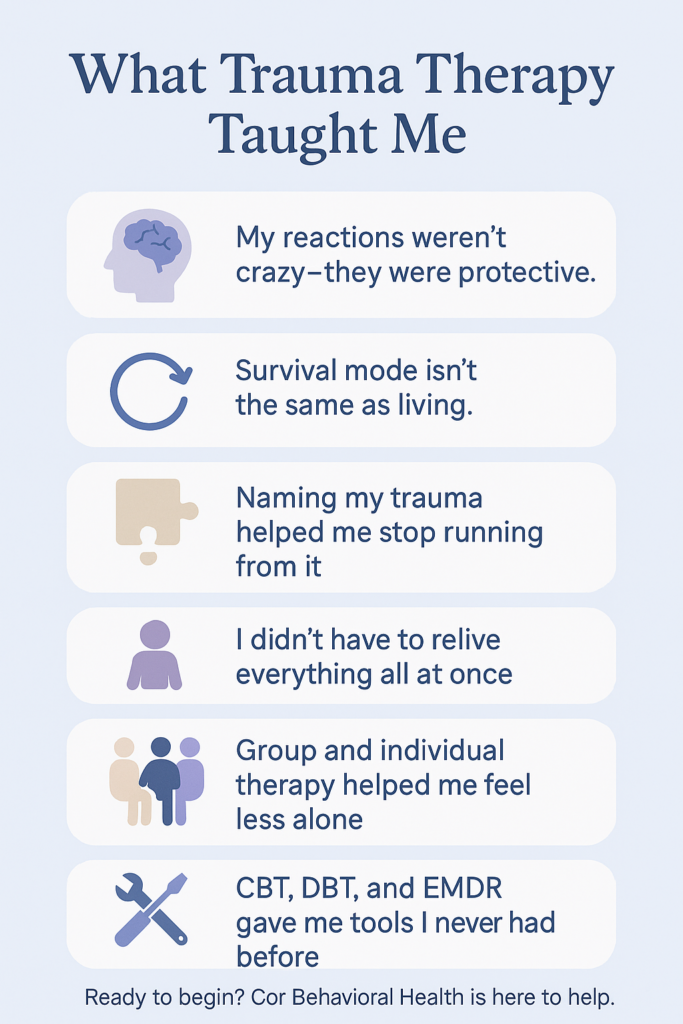
I didn’t get diagnosed with PTSD after a dramatic moment. No car crash. No battlefield. No sudden event that made it obvious.
For years, I just thought I was difficult. Moody. Maybe broken. I jumped at loud sounds. I couldn’t sleep through the night. I was constantly anxious or numb, but never in between. I didn’t know that what I was experiencing was trauma. And I definitely didn’t think I deserved help.
But eventually, my body made the decision for me. The panic attacks got worse. I couldn’t keep pretending I was okay. That’s when I found trauma therapy—and started understanding what was really going on.
If you’re in Hobe Sound, Florida, and just beginning to reckon with a trauma diagnosis, this isn’t your finish line. It’s your beginning.
1. PTSD Wasn’t What I Thought It Was
I used to believe PTSD was something only soldiers got. I didn’t know it could come from emotional abuse. From being the parentified child. From a relationship where I was constantly walking on eggshells.
I didn’t think I had trauma, because I had trained myself not to call it that.
But trauma isn’t about the event. It’s about how your body and brain store that event. Mine stored it in hypervigilance, in dissociation, in always being ready to bolt.
Once I stopped minimizing what happened to me, I could finally name it. And naming it helped me stop running from it.
2. I Spent Years in Survival Mode Without Realizing It
I thought being constantly stressed was just part of being an adult. I worked hard, kept busy, and told myself everyone was this exhausted.
But I wasn’t living. I was surviving.
I didn’t trust calm. If things felt okay, I assumed something bad was around the corner. I couldn’t relax, even on good days. My nervous system was stuck in fight-or-flight, and I didn’t even know it.
Trauma therapy helped me see that what I thought was normal was actually a symptom. Through approaches like Cognitive Behavioral Therapy (CBT) and Dialectical Behavior Therapy (DBT), I began to understand the patterns my brain had been using to try to keep me safe—and how I could start to reshape them.
3. The Diagnosis Felt Like a Breakdown—but It Was Actually a Turning Point
When I first heard the words “post-traumatic stress disorder” applied to me, I panicked. It felt big. Permanent. Like a label I couldn’t live with.
But something in me also exhaled.
For the first time, someone saw what I couldn’t explain. My therapist didn’t treat me like I was broken. They helped me understand how my brain was trying to protect me—even if those protections weren’t working anymore.
Eye Movement Desensitization and Reprocessing (EMDR) gave me a way to gently revisit painful memories—without being overwhelmed by them. It helped me finally process what had been trapped inside for years.
Getting diagnosed wasn’t the end. It was finally a start.
4. Trauma Therapy Helped Me Reconnect to Myself
Therapy didn’t give me back the time I lost. But it gave me tools to live differently moving forward.
It taught me that I’m not crazy. That my body was reacting the way it was designed to, based on what I went through. And that I could learn to feel safe again, slowly and gently.
We didn’t jump into the hard stuff right away. We built safety first. That’s what makes trauma-informed care so powerful—it respects the pace of healing.
For me, healing happened in a combination of individual therapy, where I could be fully honest without judgment, and group therapy, where I realized I wasn’t alone in my experience. Programs like IOP (Intensive Outpatient Program) and PHP (Partial Hospitalization Program) gave me more structure when I needed it most, while still allowing me the space to build a life outside of therapy.
Cor Behavioral Health met me with compassion. They understood that trauma recovery is slow—and that it’s real.
5. If You’re Just Realizing You Might Have PTSD—You’re Not Alone
You don’t have to “qualify” for trauma to deserve help. If something happened to you—and it’s still living inside you—you’re allowed to get support.
I know how overwhelming it is when you first hear the word PTSD. But I also know what it’s like to feel hope again.
There’s help in Hobe Sound. Real, trauma-informed, heart-level help. Whether it’s CBT, DBT, EMDR, or a supportive group of peers who simply get it—you can find what you need to move forward. And you don’t have to walk in with all the answers. You just have to walk in.
6. Healing Didn’t Look Like I Thought It Would
I expected therapy to be dramatic. I thought I’d have to relive everything all at once.
But healing was slower. Quieter. It looked like learning to breathe through a hard memory. Like noticing when I was dissociating and gently bringing myself back. Like telling someone the truth and realizing they didn’t run away.
Trauma therapy didn’t fix me. It helped me see that I wasn’t broken.
7. I Still Have Hard Days—But They Don’t Define Me Anymore
Recovery isn’t about being happy all the time. I still have moments of anxiety, nights when sleep feels impossible, days when the past creeps in.
But now, I have tools. I have a support system. I have the ability to say, “This is hard,” without spiraling into shame.
The goal of trauma therapy wasn’t to erase my past. It was to help me live alongside it—with gentleness and power.
🧠 Ready to Stop Running?
📞 Call COR Behavioral Health at (888) 511-8424. We offer trauma therapy in Hobe Sound that meets you where you are. Whether you’re newly diagnosed or still wondering, “Could this be PTSD?”—you’re welcome here.
Explore more:
- Trauma-Informed Therapy at Cor Behavioral Health
- How Trauma Changes the Brain (and How to Heal)
- Is This Trauma or Just Stress? Here’s How to Tell





